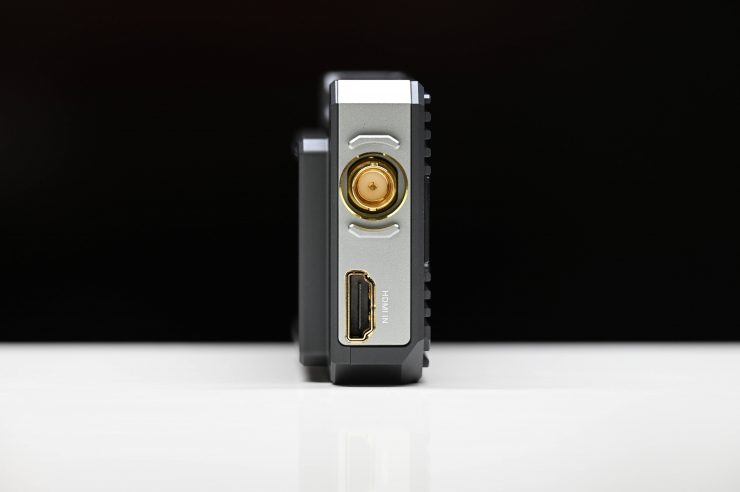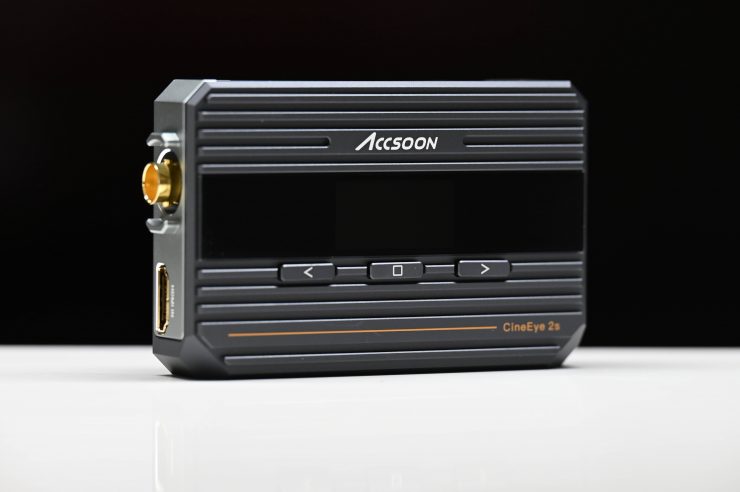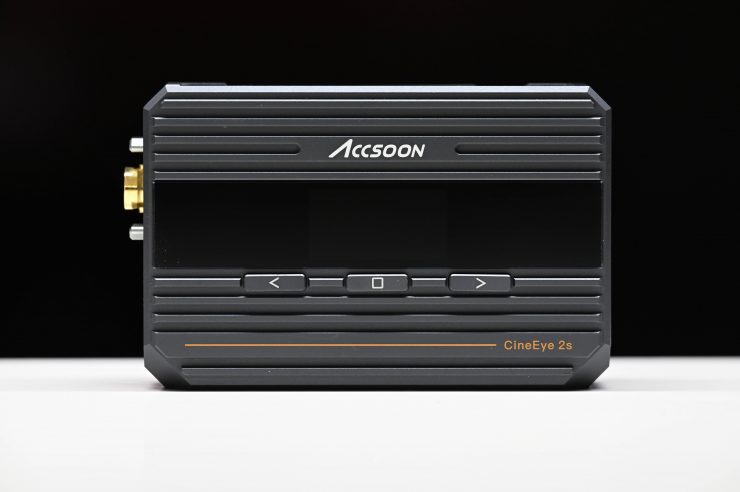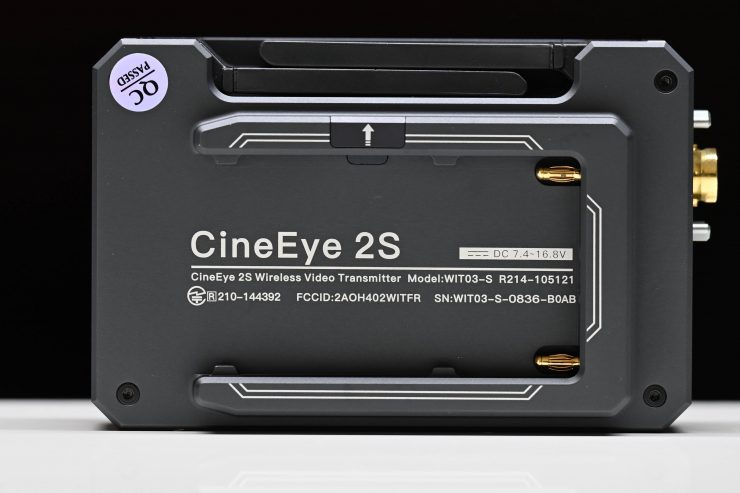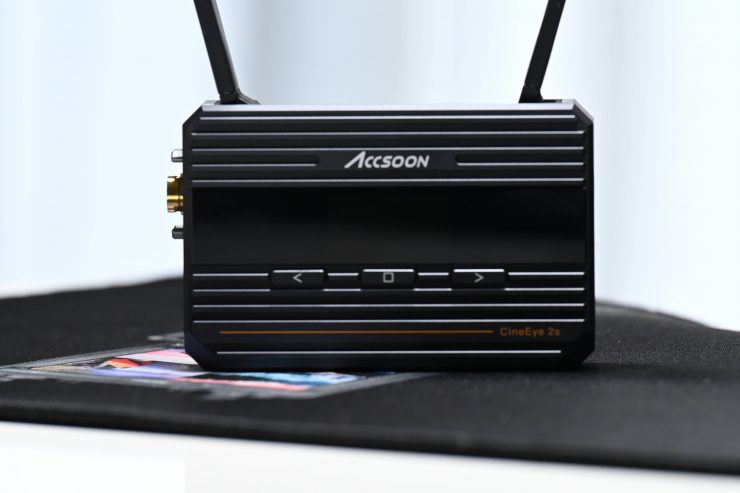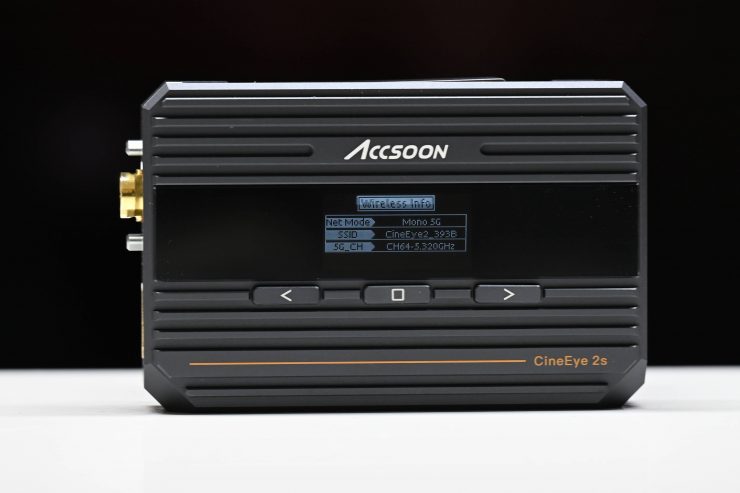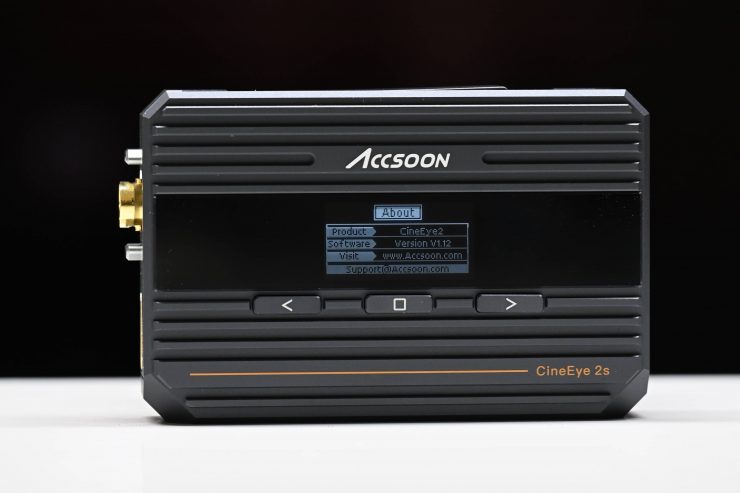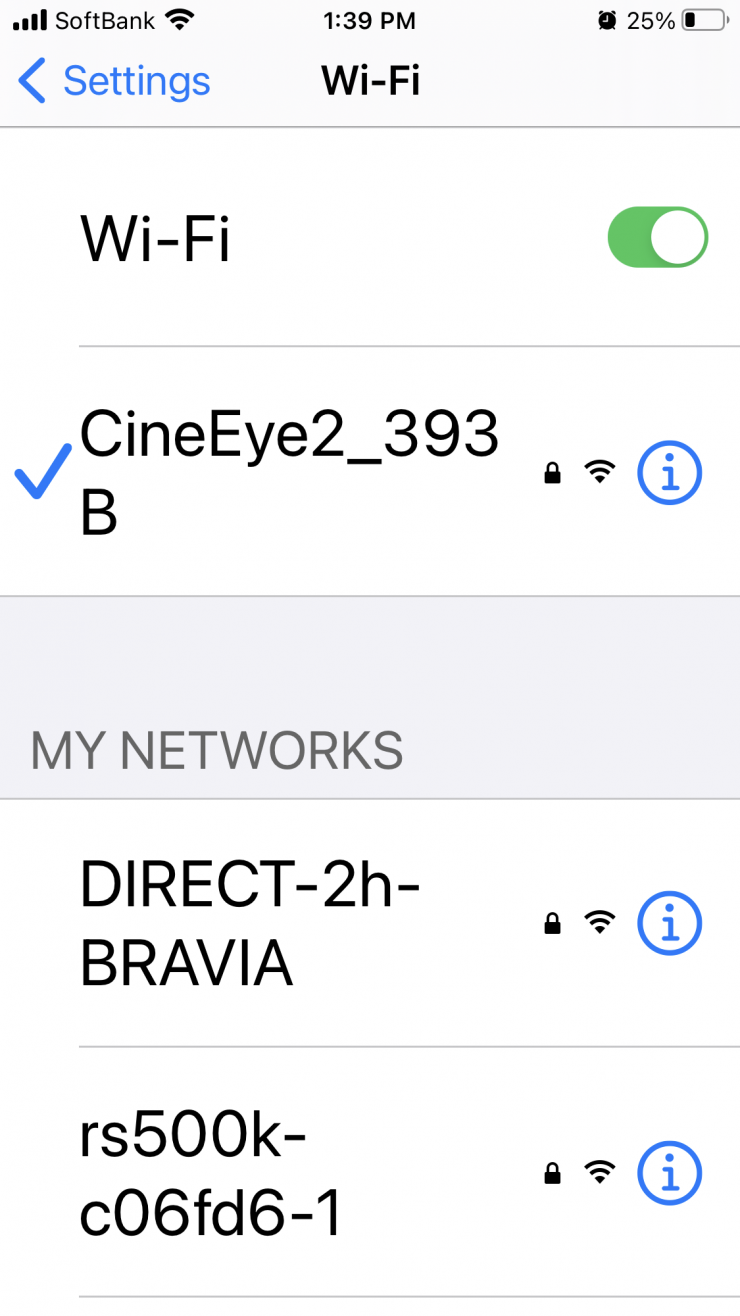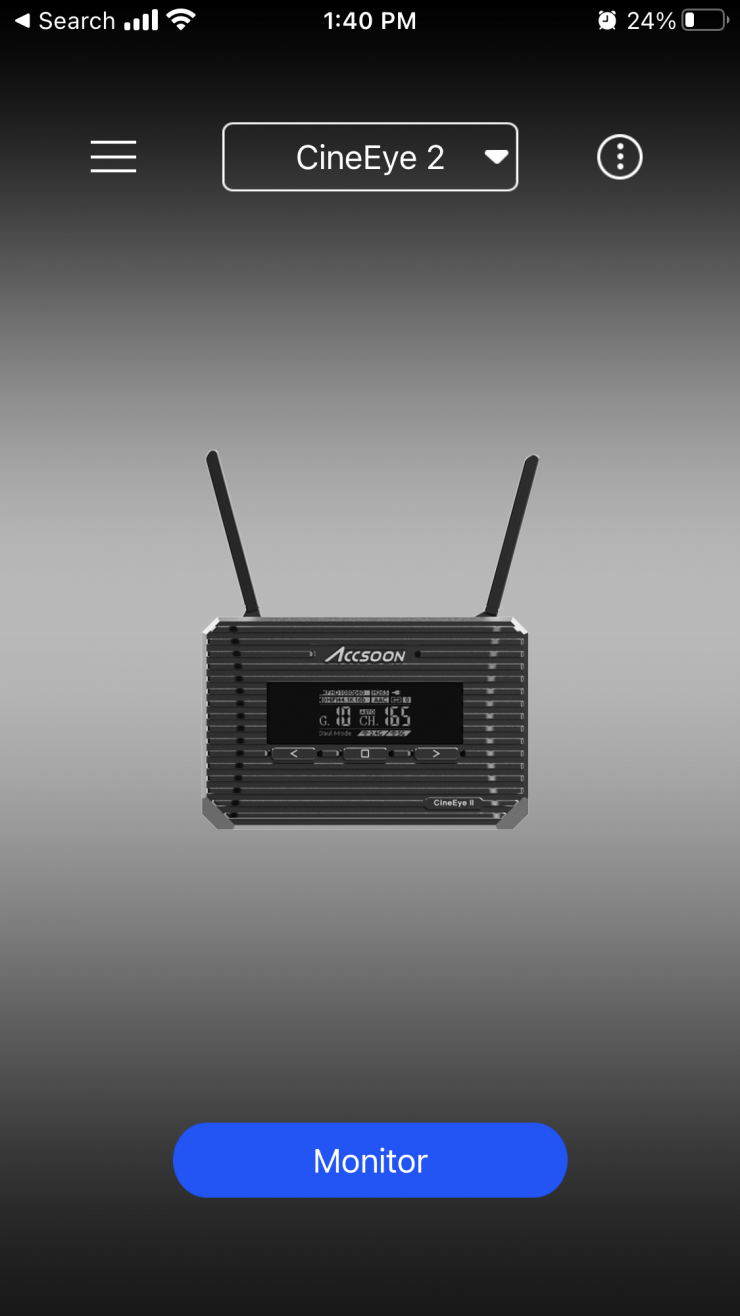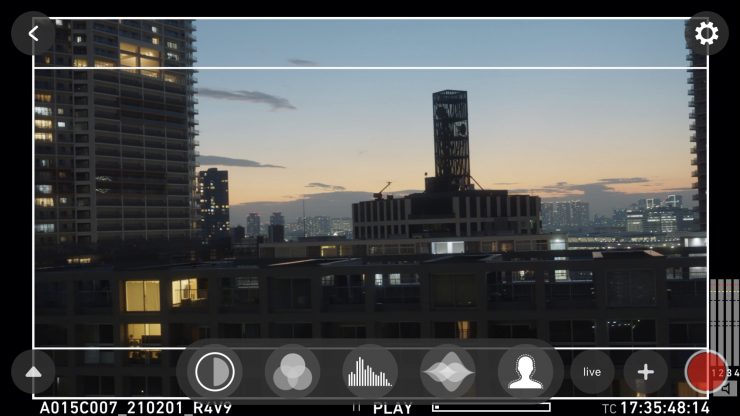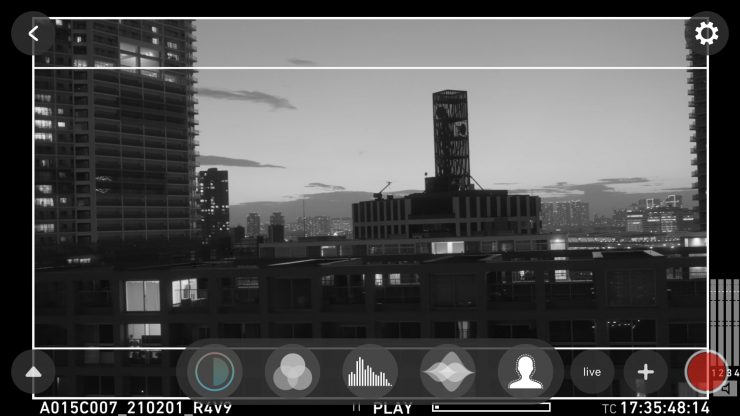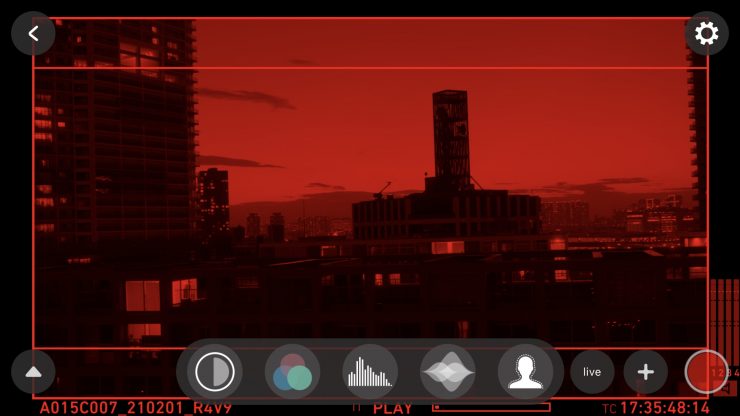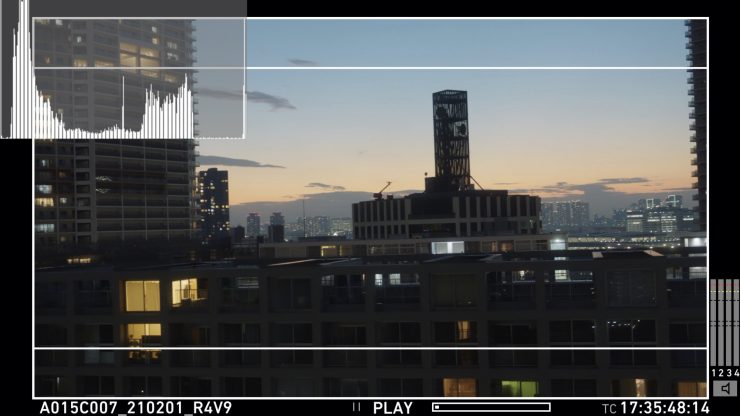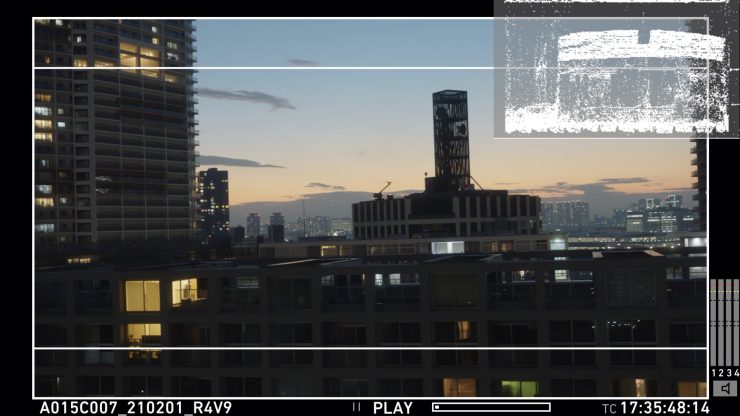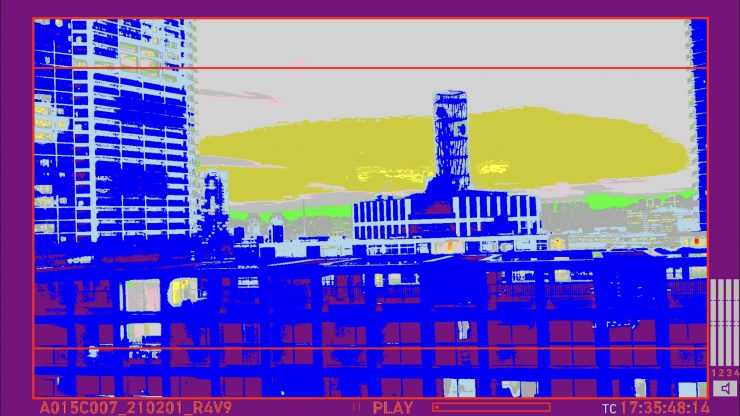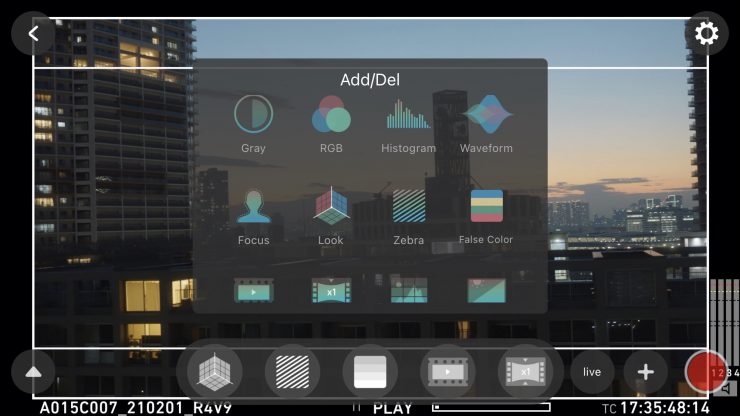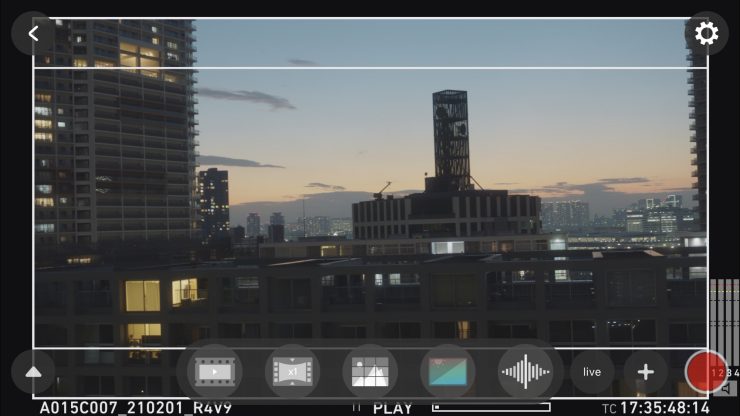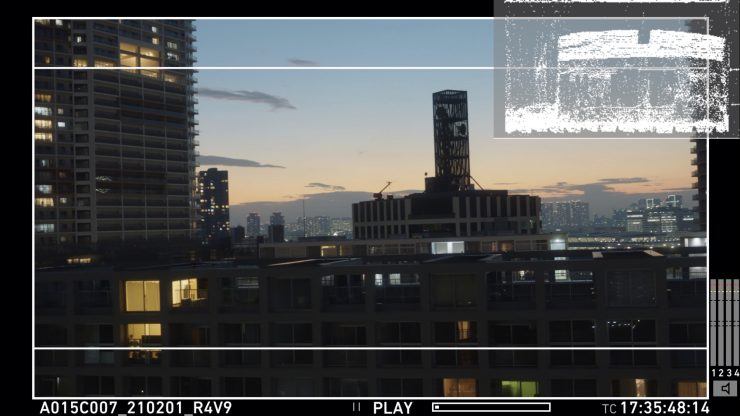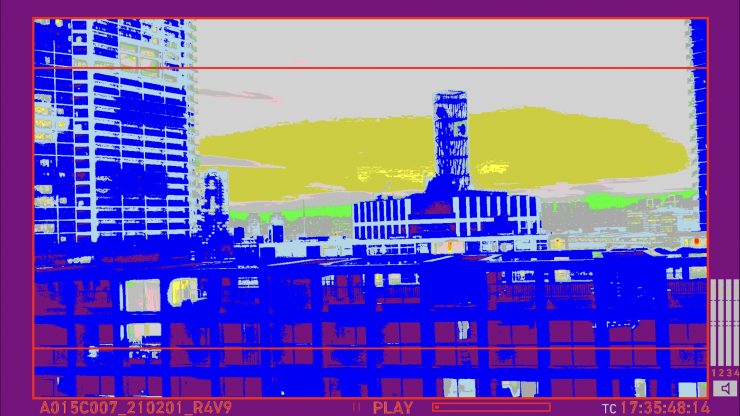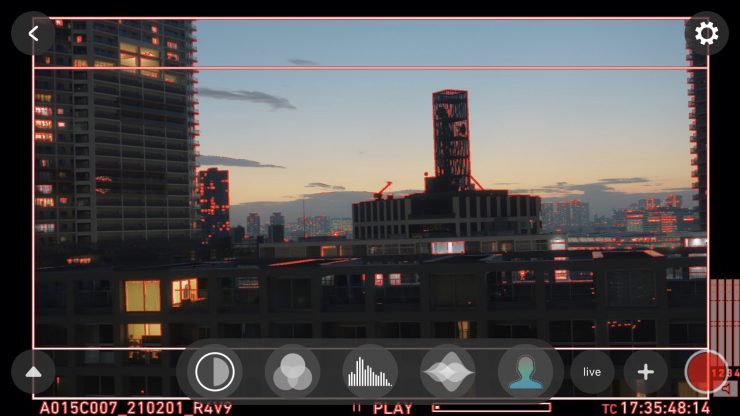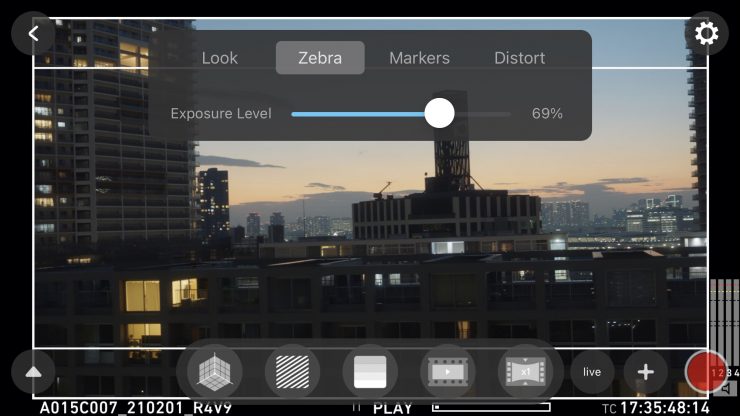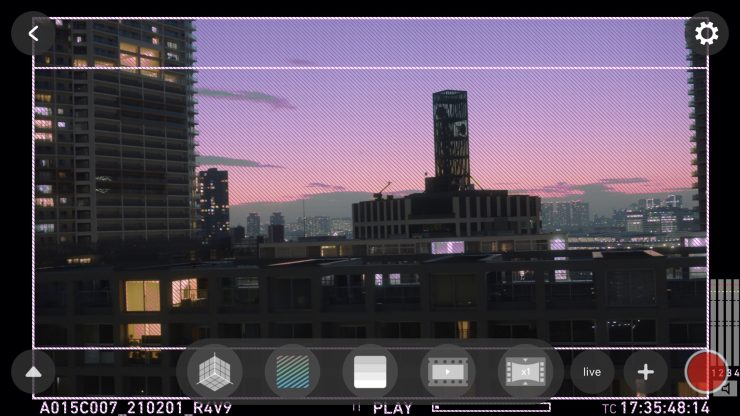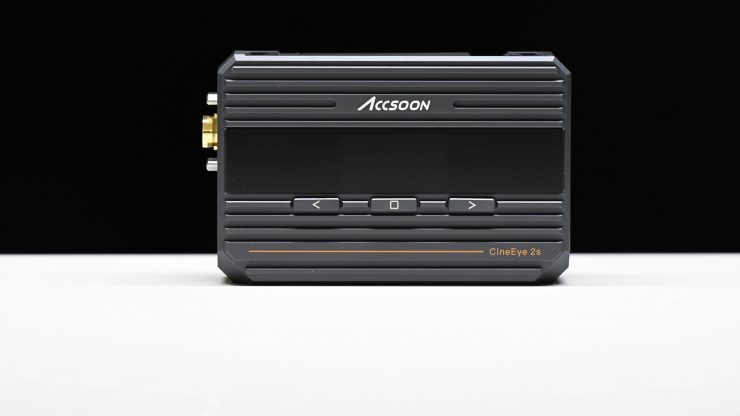
Accsoon recently announced the CineEye 2S, a follow up to the CineEye 2 and the original CineEye that was announced at NAB 2019. The CineEye 2S follows the same concept as the original CineEye 2, except it features both SDI and HDMI inputs.
The original CineEye was a big hit with budget filmmakers as it allowed you to stream an HDMI signal directly to smartphones and tablets through Wi-fi. At $249 USD it was arguably the first budget-friendly way of viewing wireless video on multiple devices. Above you can see our video report from NAB 2019.
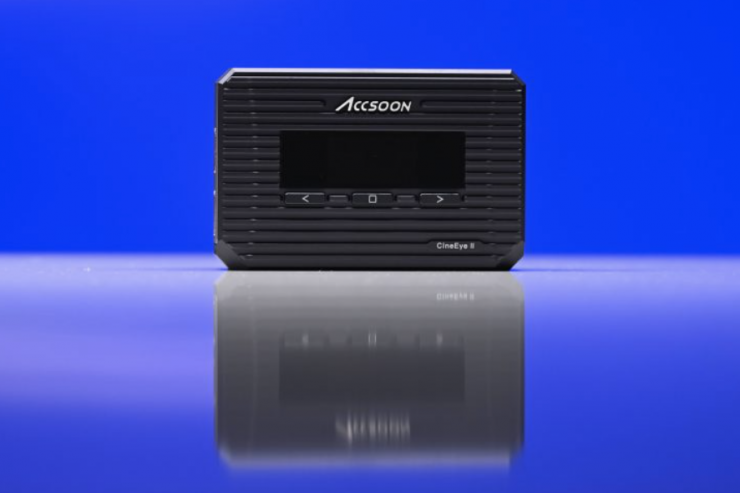
Accsoon then released the CineEye 2 in November last year. You can read my full review of that product here.
What it is and what it isn’t
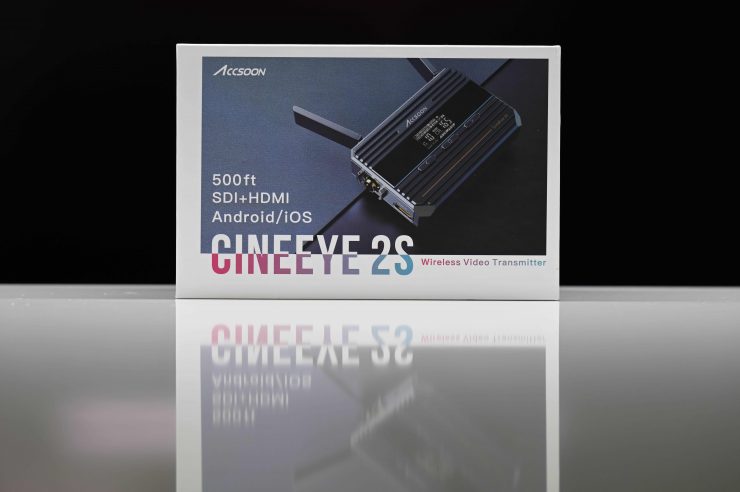
The Accsoon CineEye 2S is a second-generation, compact transmitter that simultaneously transmits up to a 1080p60 video signal from an HDMI or SDI source to four iOS/Android mobile devices such as smartphones and tablets. It has a claimed transmission distance of 150m (492)’, a claimed latency of 60 ms, a choice of up to 20 wireless channels, and power via an L-series battery.
You need to be very aware that this is not intended to be a replacement for a close to zero latency system. Any wireless video system that utilizes 5 GHz is compressing the image signal and you will always get some delay. This is not a system I would recommend if you want to use it to pull focus off a transmitted image.
The CineEye 2S is much more suitable as an easy way of letting multiple people monitor images without needing to give everyone monitors or RX units.
Accsoon has been busy
Accsoon also recently released the CineEye 2 Pro which I reviewed. The CineEye 2 Pro is quite a lot larger than the original CineEye. The CineEye 2 Pro more closely resembles a traditional wireless video transmission system, than a Wi-fi based system.
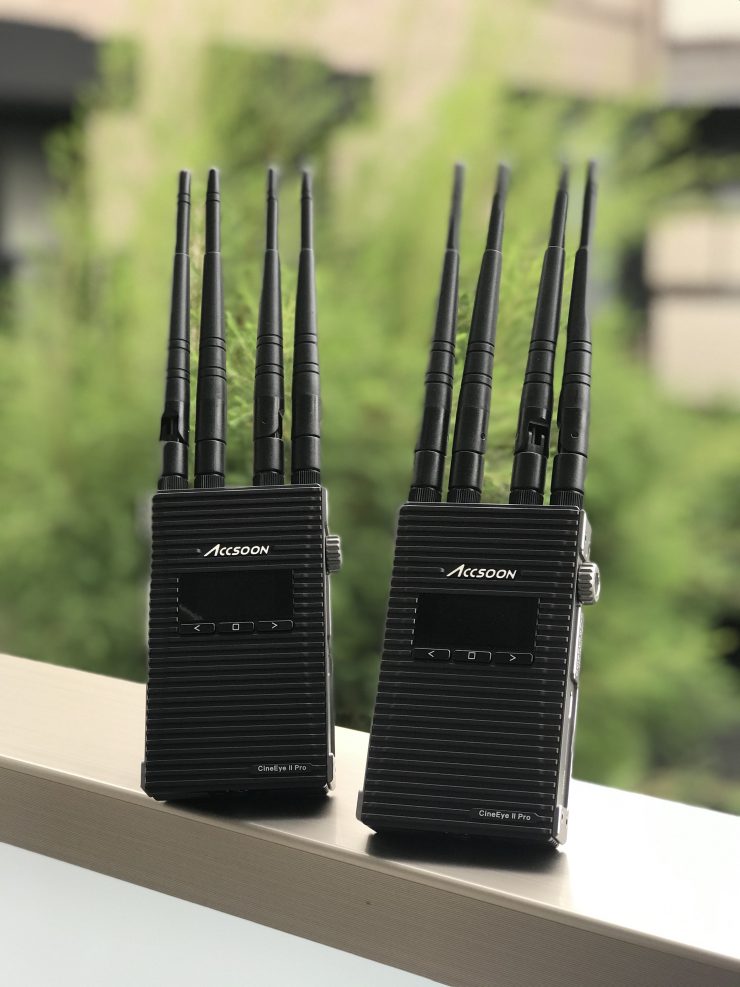
Instead of there just being a transmitter, the CineEye 2 Pro consists of both a transmitter and a receiver. This way you can use the system to either transmit to iOS or Android devices or/and to the receiver unit which can output an HDMI signal to a monitor, etc.
So let’s check out the CineEye 2S.
Key features
- 1080p60 with Audio to 4 Mobile Devices
- 492′ Transmission Distance, 60ms Latency
- SDI and HDMI Inputs
- OS/Android App with False Color & More
- Start/Stop Camera Control
- LUT Support
- L-Series Battery Support
- 1/4″-20 Mounting Thread
Size & Design
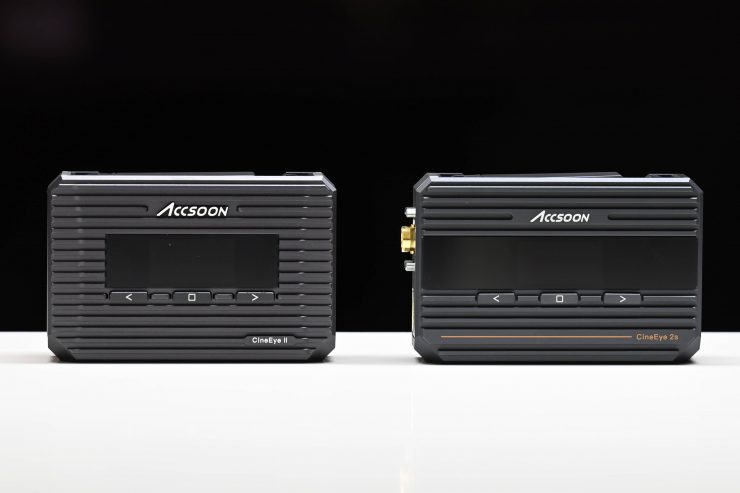
CineEye 2 on the left, CineEye 2S on the right 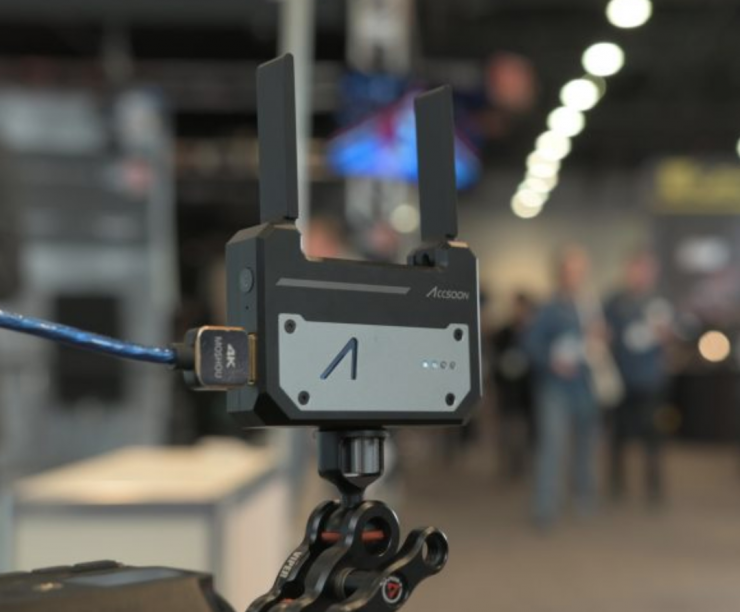
CineEye
The CineEye 2S features an almost identical form factor to the CineEye 2. If you compare the CineEye 2 and 2S to the original CineEye you can see how the design has been modernized and improved with a new housing and an OLED screen.
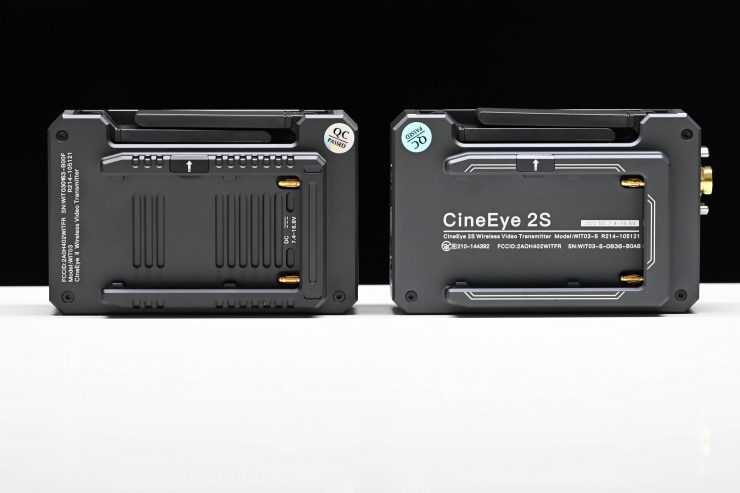
Not only is the front of the CineEye 2S slightly different from the CineEye 2, but the battery plate is also different.
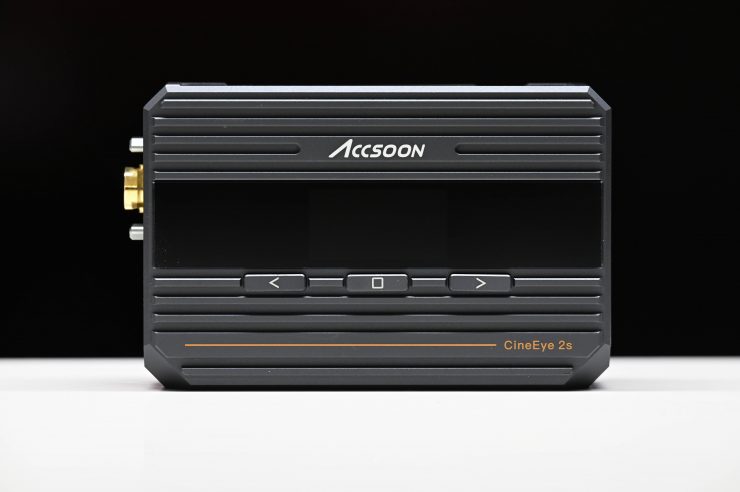
The CineEye 2S weighs in at 213 g / 7.5 oz which is exactly the same as the CineEye 2. The physical dimensions are 108 x 69 x 30 mm (4.3 x 2.7 x 1.2″). This makes it just a tiny bit bigger than the CineEye 2 which has physical dimensions of 105 x 68 x 30 mm / 4.1 x 2.7 x 1.2″.
Unlike the original CineEye, which had a built-in battery, you do need to factor in that adding a Sony NP-F style battery is going to add a lot more weight and create a lot larger footprint.
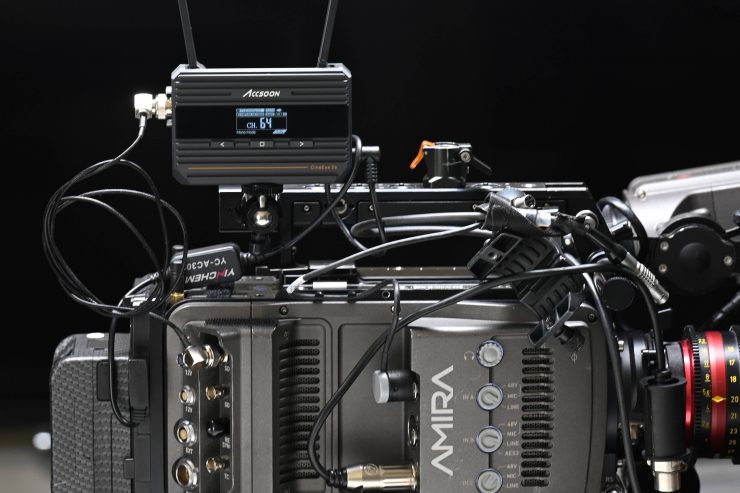
The weight and footprint do make the CineEye 2S feel quite big on small-sized mirrorless hybrid cameras, however, for an SDI capable device, it is very small. Above you can see how much space it takes up on an ARRI Amira.
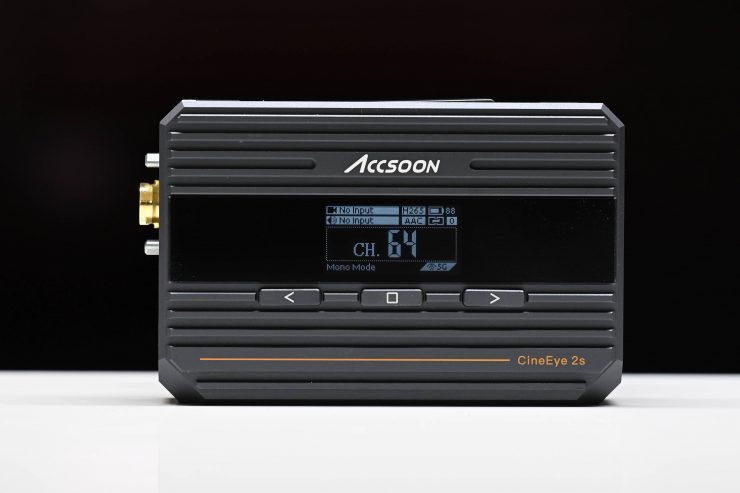
The CineEye 2S has the same exact 1.3″ OLED screen that can be found on the CineEye 2 and CineEye 2 Pro.
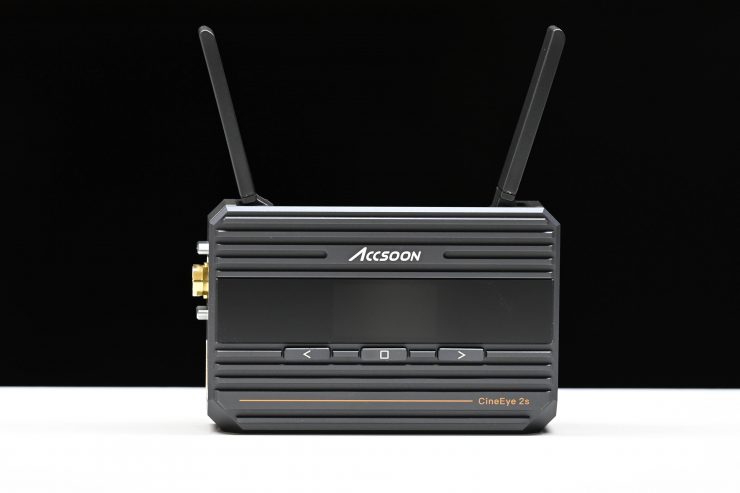
Accsoon has stuck with the same folding antenna design that they utilized with the original CineEye.
I personally like the new design and the built-in OLED screen is a welcome addition.
Concept
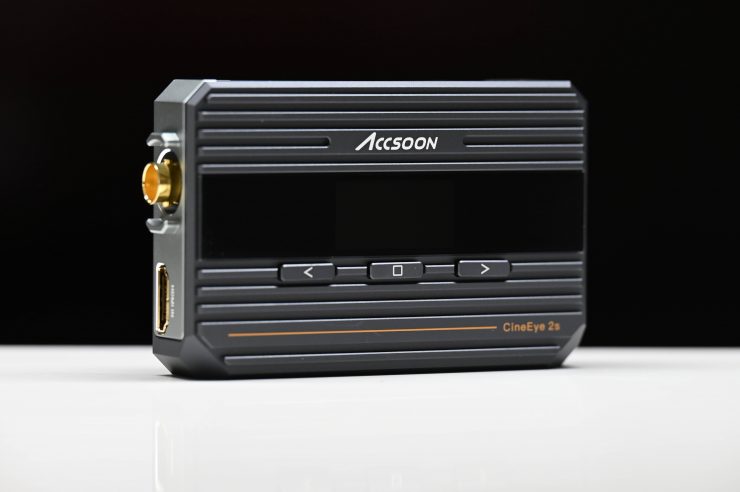
The CineEye 2S fills a bit of a void in the market where there wasn’t an affordable, compact SDI wireless video TX available. It wasn’t that long ago where wireless video systems were very expensive and out. Even the most basic of systems could empty your wallet. In the last year or so, affordable wireless video systems have been popping up everywhere and now more people than ever have access to it.
The CineEye 2S is an interesting product because it could be used by anyone from budget filmmakers to those shooters using mirrorless hybrids and small-sized digital cinema cameras, all the way up to people using higher-digital cinema cameras that only have SDI outputs.
This versatility makes the CineEye 2S an interesting proposition.
Build Quality
The CineEye 2S is robustly made. It feels very solid and a lot of that has to do with the hard metal enclosure.
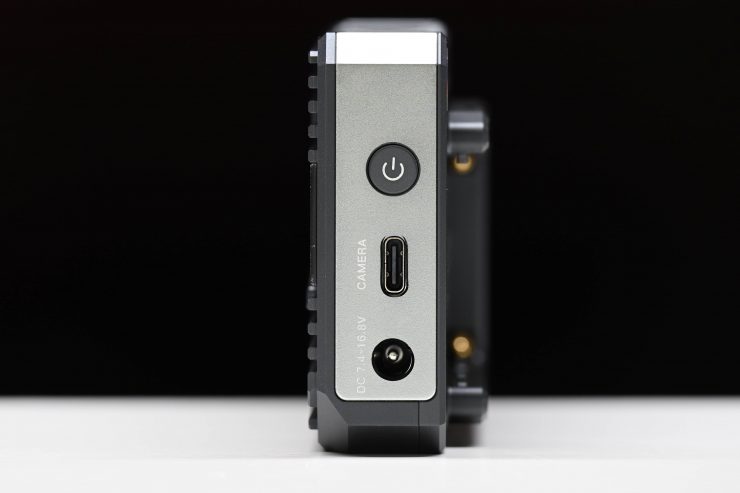
The buttons and dials feel reasonably firm and there is nothing that I can see that concerns me.
What do you get?
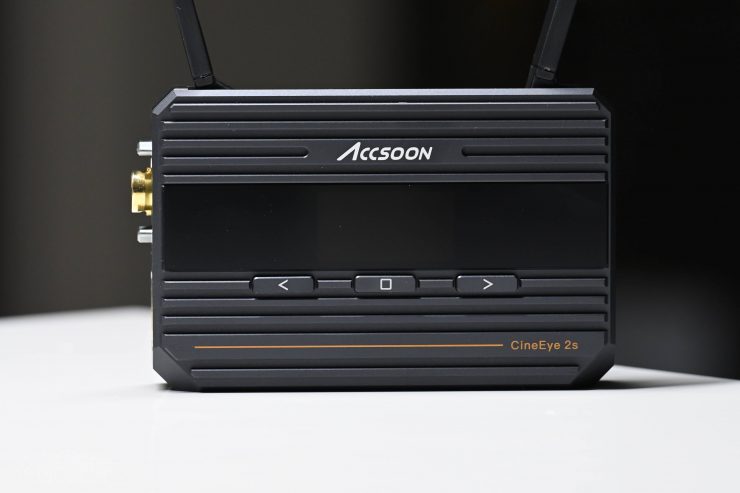
The CineEye 2S comes with the TX unit, user manual, and 1x cold shoe mount.
Transmission
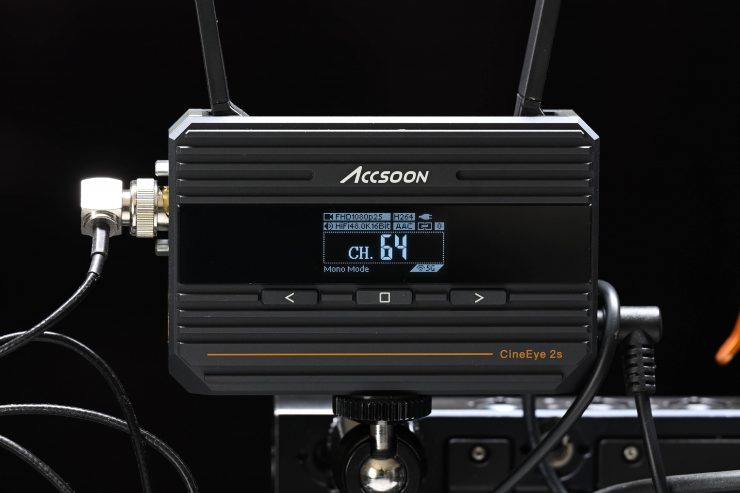
The CineEye 2S can send up to 1080p60 over 5 GHz Wi-Fi.
The CineEye 2S will automatically find a clean channel before the transmission starts, and as the distance increases will automatically lower the streaming bit rate to maintain real-time monitoring. CineEye also allows you to manually select from 20 5 GHz transmission channels. The 5 GHz Wi-Fi signal is more resistant to interference than standard Wi-Fi.
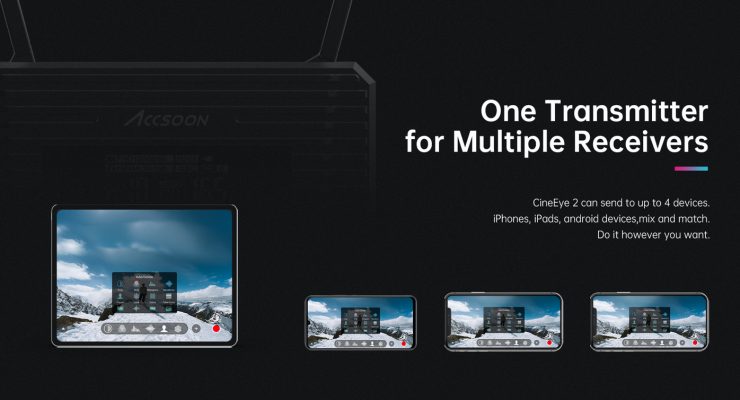
One transmitter can stream to up to four iOS or Android devices. You can use a combination of Android or iOS devices, as long as you aren’t using any more than four. The original CineEye was also capable of streaming to four devices at once.
The CineEye 2S uses HEVC compression and as I have already mentioned, it can send video signals up to 1080 60p.
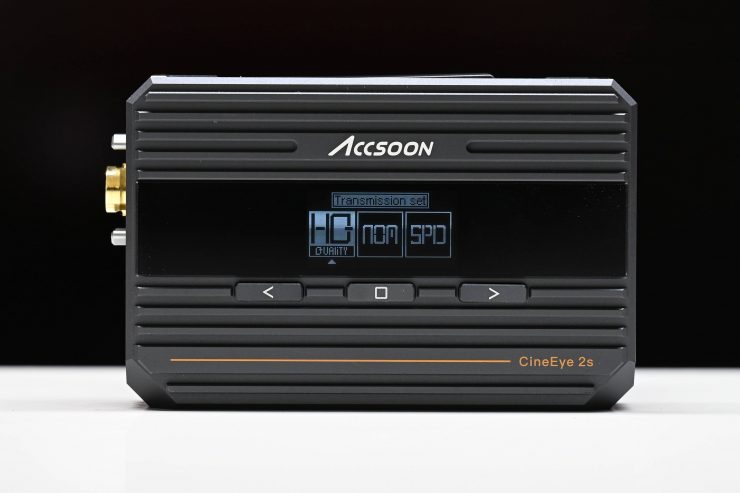
There is a Data Rate Setting that you can adjust on the TX unit. There are three different modes you can choose from:
- High-Quality Mode
- Normal Mode (default setting)
- Speed Mode
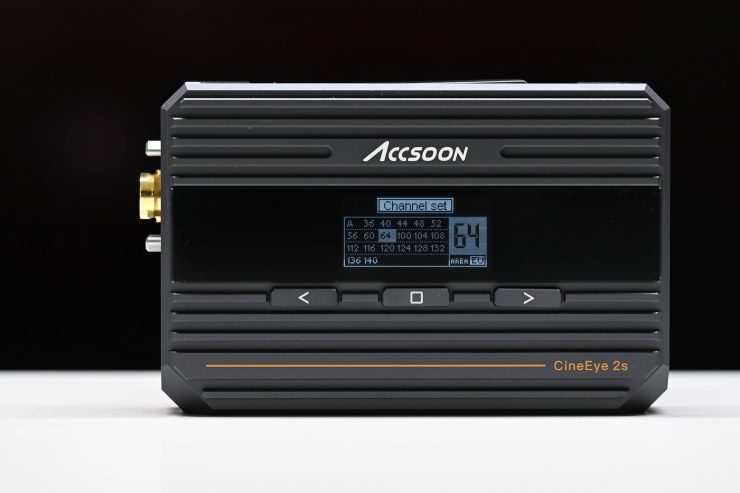
You can select from a range of different operating channels or just set the TX unit to Automatic channel selection.
Live Streaming
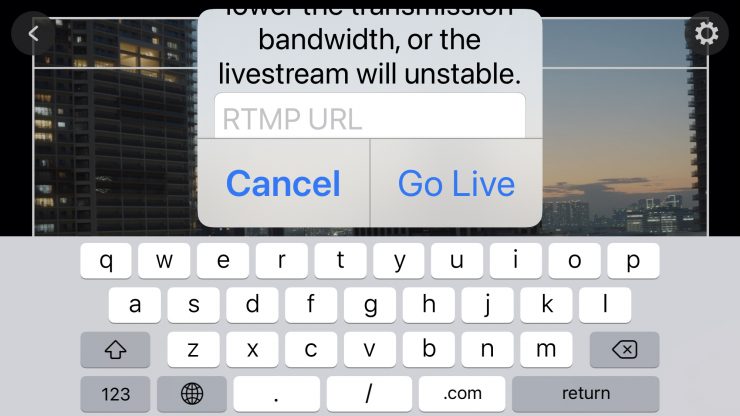
Live streaming using the CineEye 2S is not supposed to be that difficult. You connect to the app, then there is a ‘go live’ button where you can input your RTMP stream key and RTMP URL address. Obviously, you are using the Wi-Fi to connect to the CineEye 2S so you need to stream either using the phone’s data connection or via a Bluetooth-connected data connection. Also to do this reliably you need to select a specific quality setting. This means you need to select Speed as the quality setting and the picture quality won’t be as good when you start to stream.
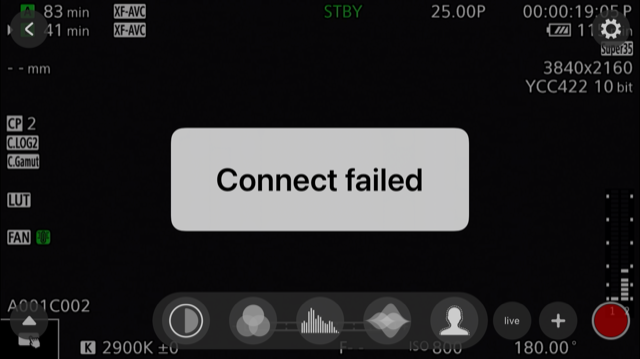
Now, I tried doing this multiple times by following the instructions and I couldn’t get it to work with YouTube live. I am not sure if I was doing something wrong, but it wouldn’t work for me.
Extended Range
The original Accsoon CineEye also utilized 5 GHz Wi-Fi and it had a claimed range of up to 328 feet (99.97m) line of sight with a latency of approximately 60ms. The CineEye 2S has a claimed range of up to up to 500 feet (150m).
Accsoon claims that the latency on the CineEye 2S is (60ms). In reality, usually, this latency is a lot higher than is usually quoted by manufacturers. However, it will be interesting to see if the latency is any better using SDI than HDMI. If you are using the HDMI input on the CineEye 2S you also need to factor in the HDMI delay from the camera you are using. Some cameras have worse latency than others.
I will test both of these facets of the system further down in the review.
Operating Interface
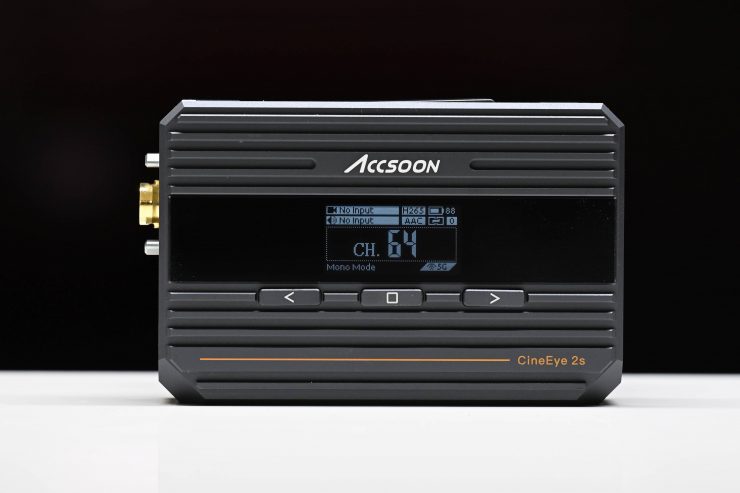
The screen is nice and big and it lets you see key information clearly.
The boot-up time is fairly slow for this device. It takes around 12 seconds from the time you turn on the TX unit until it comes up on the main screen. This is something you need to be aware of.
The menu system is very easy to navigate and for making changes. There are no complex menus or endless pages that you need to deal with.
SDI & HDMI
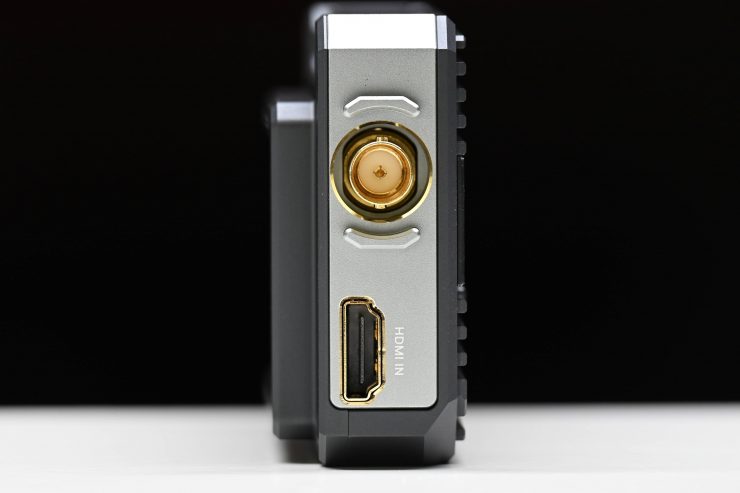
Unlike the CineEye 2 that only has a single HDMI input and an HDMI output, the CineEye 2S has an HDMI input (full-sized) as well as an SDI input. Despite gaining an SDI input with the CineEye 2S you do lose the HDMI output that is found on the CineEye 2, which allows you to loop a signal through which is important if you are also running a monitor, monitor/recorder, or an EVF. Again, this is something to keep in mind when considering these two different versions.
How is it powered?
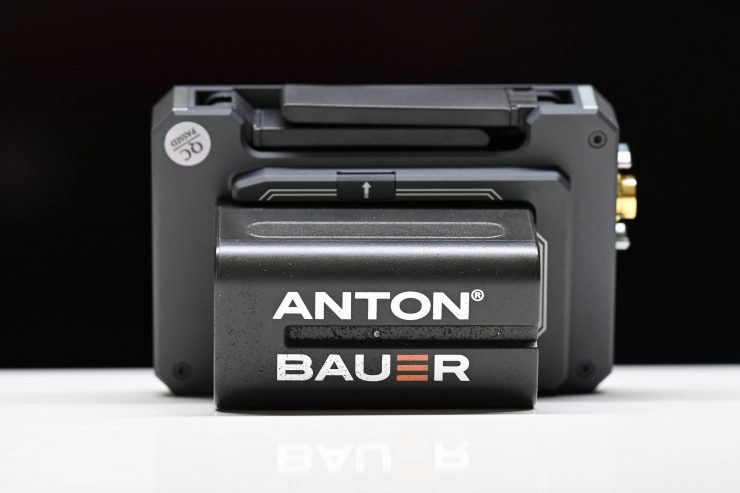
The CineEye 2 is powered via a single Sony NP-F style battery. According to the company, a Sony NP-F970 battery can power the unit for up to 14 hours. I found the battery performance to be good.
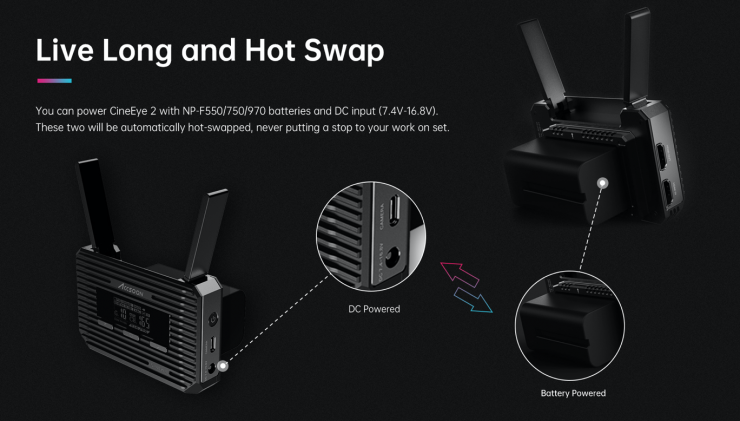
You can also choose to power the unit through the DC input (7.4V to 8V) if need be. If you are inputting a 7.4V to 8V DC signal you can also run a battery and then hot swap that battery without the unit turning off.
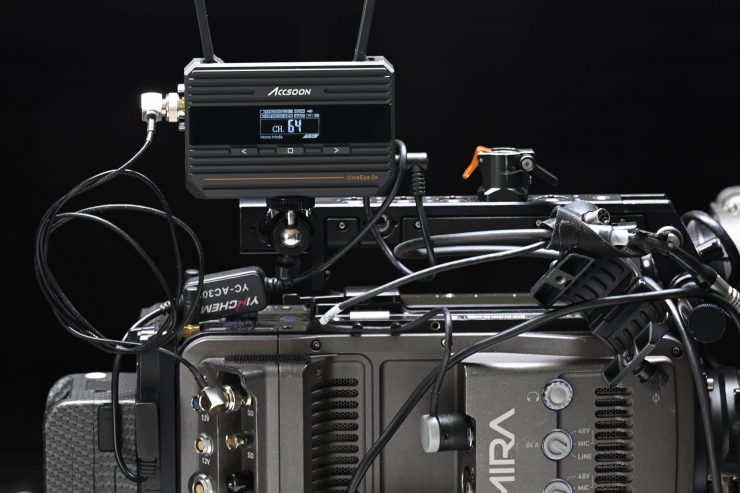
I actually preferred running the CineEye 2S using a D-Tap to DC cable directly from my camera. However, it makes a lot of sense to have a battery attached even if you are running it through the DC input. Why? Well if you are just using the DC input and you turn your camera off or swap over camera batteries the CineEyes 2S turns off. When it turns off you lose the Wi-Fi network and anyone who is monitoring has to reconnect to the Wi-Fi and then re-launch the app. If you have a battery on the CineEyes 2S and you are also running a DC input the device will stay on when you power done the camera or change over batteries.
The original CineEye runs on a built-in battery that gave you approximately four hours of run time. It was rechargeable via a standard 5V/2A USB charger.
Yes, having a built-in battery would have made the CineEye 2S smaller, but I personally prefer to be able to power a TX unit through the use of batteries or through a DC power input.
iOS & Android App
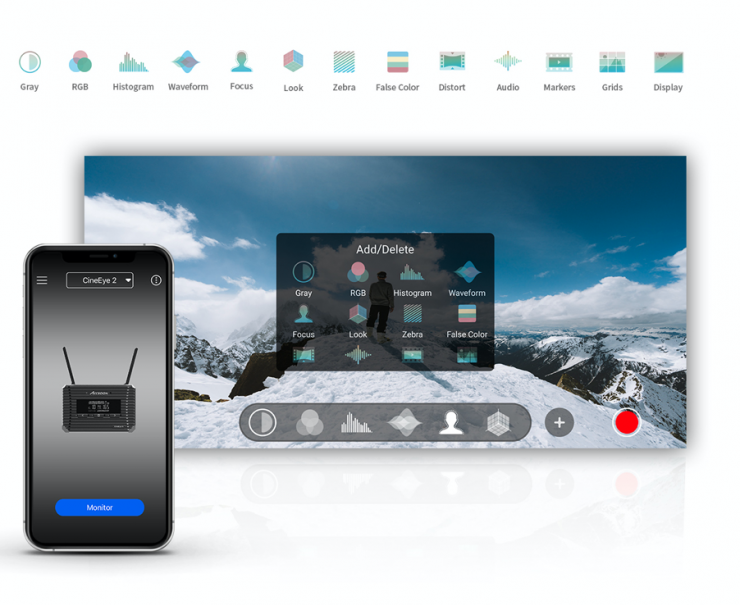
If you are streaming to an iOS or Android device, you can use the Accsoon App to monitor your wireless stream. The App features a lot of functionality and monitoring tools such as focus assist, waveform, false color, zebras, in-app audio and video recording, as well as the ability to load up your own 3D LUTs.
It is fairly easy to set up and get the app running. You just launch the app, turn on the TX unit (making sure it is receiving a signal from the camera) and join the CineEye 2S Wi-Fi network.
More on how it actually performs later on in the review.
Camera Control
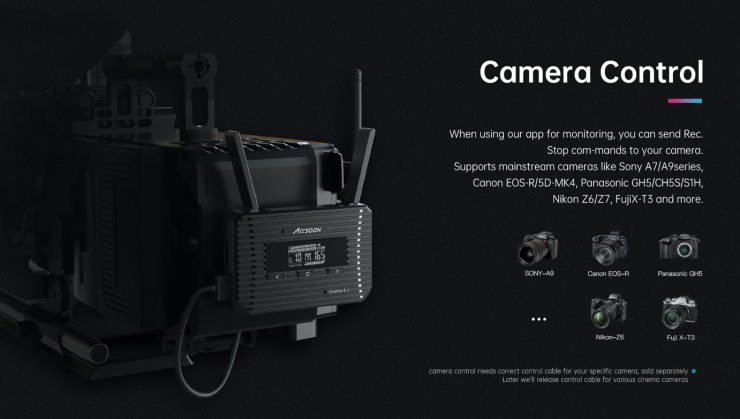
If you are using the Accsoon App for iOS or Android you can also control the start/stop recording of certain cameras. According to Accsoon, the CineEye 2S is claimed to work with the following cameras:
- Canon EOS R
- Fuji XT-3
- Canon EOS 5D Mark IV
- Sony a9
- Panasonic GH5/GH5S
- Panasonic S1H
- Nikon Z6
- Nikon Z7
Now, there is a catch, you need to purchase an optional camera control cable to be able to utilize this functionality. Accsoon didn’t supply any camera cables so I wasn’t able to try this feature out.
This feature still puzzles me as I have never actually seen the control cables for sale or seen any review or information about how they actually work.
Mounting Points
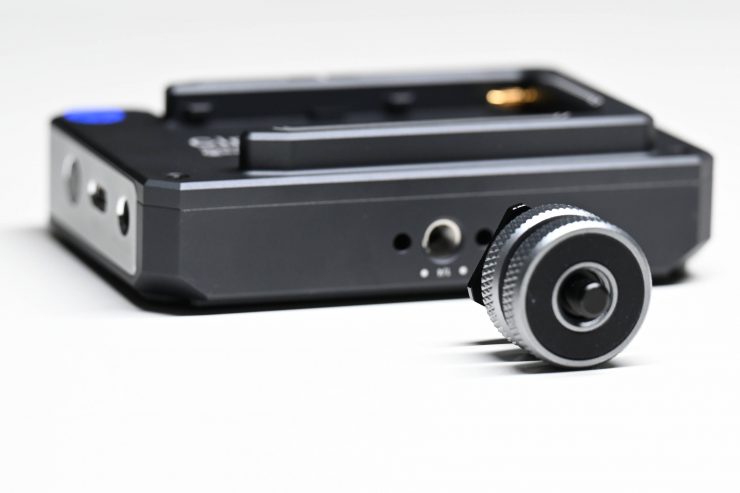
The system comes with a cold shoe to 1/4 20″ mount. This is reasonably well made, however, because there is only a single mounting hole on the bottom of the TX it can limit where you can place it on your camera. If you want to mount the TX in another position you would have to use a monitor arm or something similar.
Accsoon Go App Usability
The app features some nice functionality, however, like most app-based monitoring systems, there is certainly a lot of room for improvement.
Here is what monitoring functions are available using the app:
- Gray
- RGB
- Histogram
- Waveform
- Focus Peaking
- Look
- Zebra
- False Color
- Markers
- Anamorphic de-squeeze
- Grids
- Display
- Audio
- LUTs
You can do focus magnification by pinch to zoom directly on the screen.
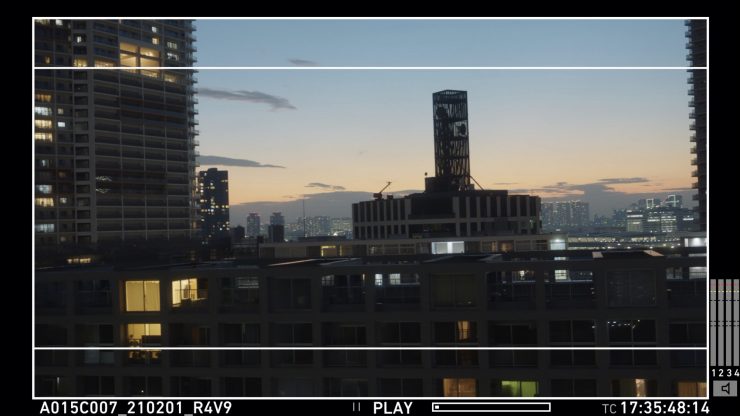
You can also tap on the screen to remove the overlays to see just the image feed.
You can also choose what monitoring items you want to use. By selecting or deselecting these items you will only be able to see those items you have selected at the bottom of the screen. I do find it a little strange that the Add/Del section actually names the icons, but on the main screen they aren’t named. This does make choosing some of them a little confusing.
While most of the monitoring features work ok I wish more companies (and this doesn’t just apply to Accsoon) would actually put range indicators on features such as the waveform, false color, and audio meters. Having these items marked would let you know what you are looking at.
There is also peaking and zebras but you can only change the intensity of the zebras. This can be done from 0%-100%. Strangely the zebras come up as a rep/purplish color. You can’t change the color or the intensity of the peaking, it is stuck on red.
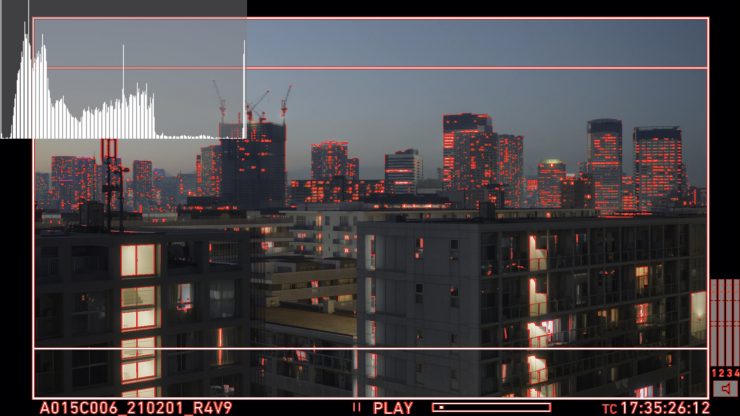
You can put multiple view assist tools up at the same time if you need to. Unfortunately, you can change the size or position of these monitoring assist tools.
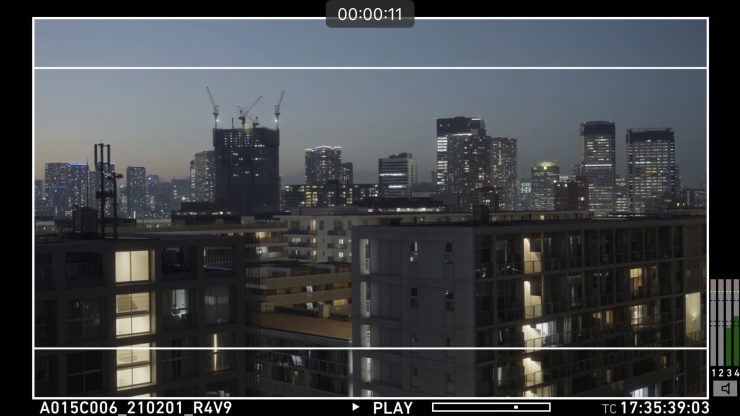
I like that you can actually record the video you are seeing directly on the phone. While this isn’t great quality it does allow you to view back clips and also to upload something to social media if need be.
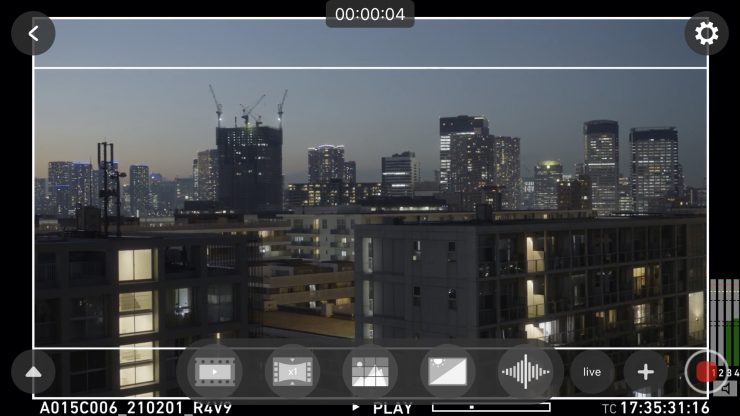
The picture quality of the signal coming up on the app is pretty good. It will probably be good enough for most people who are buying a system such as this. In all honesty, it is one of the better-looking pictures I have seen from a wireless app-based system at this price.
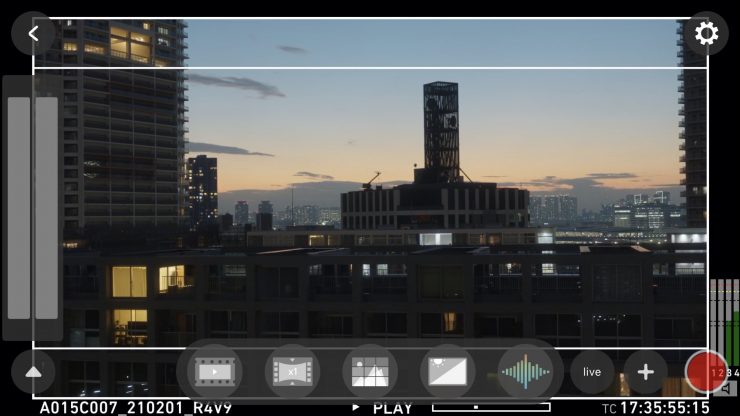
Strangely I couldn’t see any audio coming through SDI showing up on the Accsoon Go app. I think because it only shows you 2 channels of audio and the audio being recorded on my camera was on channels 3 and 4.
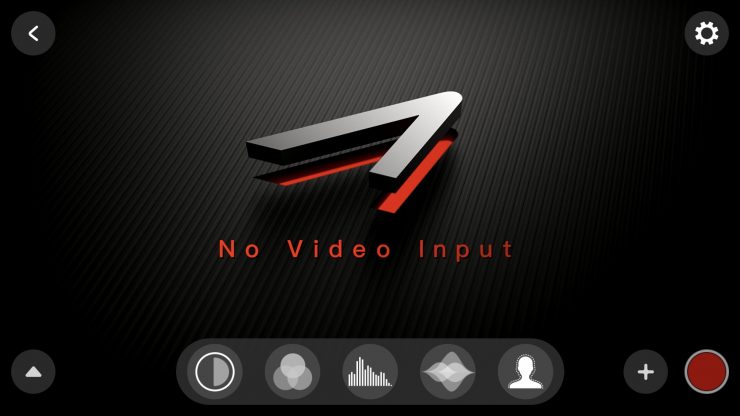
If you happen to lose the video signal while the app is open you will see the above warning on the screen.
I tried pulling out the HDMI cable and also the SDI cable from the TX while the app was on and then plugging it back in to see what happened. The signal re-established almost instantly and I didn’t have to re-boot anything to get it working. This was nice to see.
With any app, there is always going to be the ability for improvement through updates. Hopefully, Accsoon will address some of these issues I had with the app.
Image Delay
Image delay can be a problem with HDMI based devices, but it really depends on the camera you are using. Some cameras have horrible image delay over HDMI, while others are really good. Cameras with SDI tend to have a lot better latency, but when you are dealing with wireless image transmission devices that send a compressed signal over Wi-Fi then there couldn’t be a massive difference between HDMI and SDI delay, although this would depend on the camera.
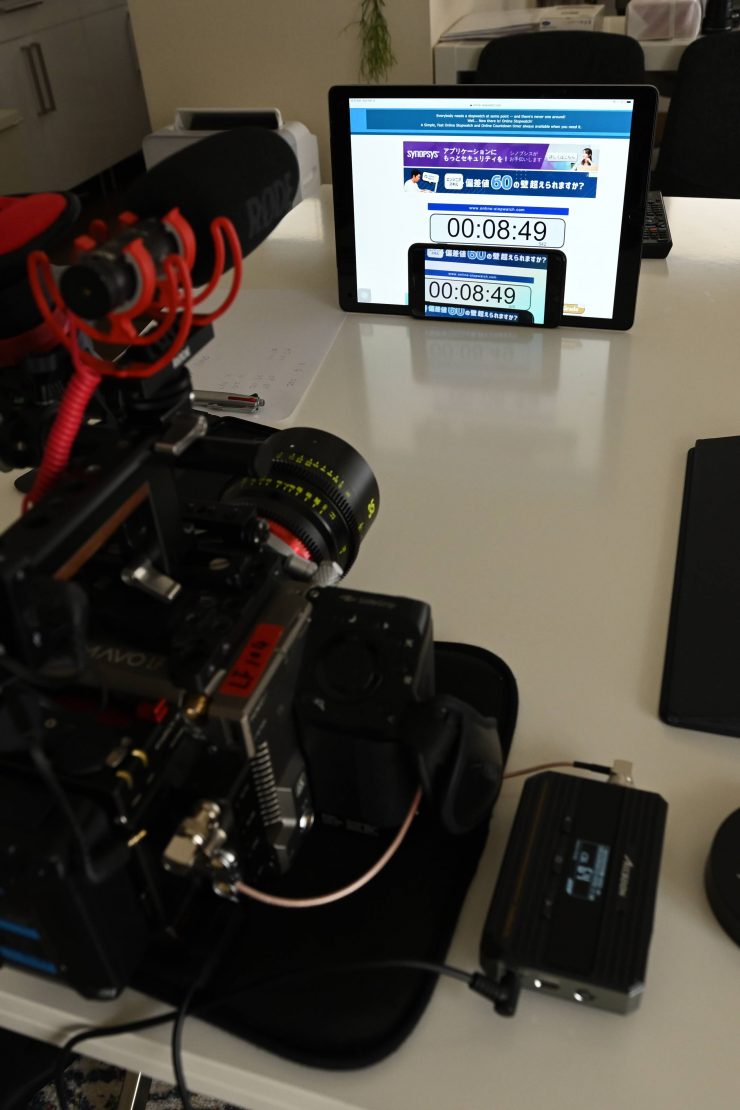
So what is the delay like over SDI from the Kinefinity MAVO LF? I measured the delay average over a series of three tests at 43.66ms when using the Accsoon Go app with the TX set to HQ transmission. When it was set to Normal transmission the average delay was 66ms. When it was set to Speed transmission it recorded an average delay of 21.33ms.
These results were excellent for a budget wireless video system. Accsoon quotes a figure of 60ms for latency, and those figures from my testing seem to be correct.
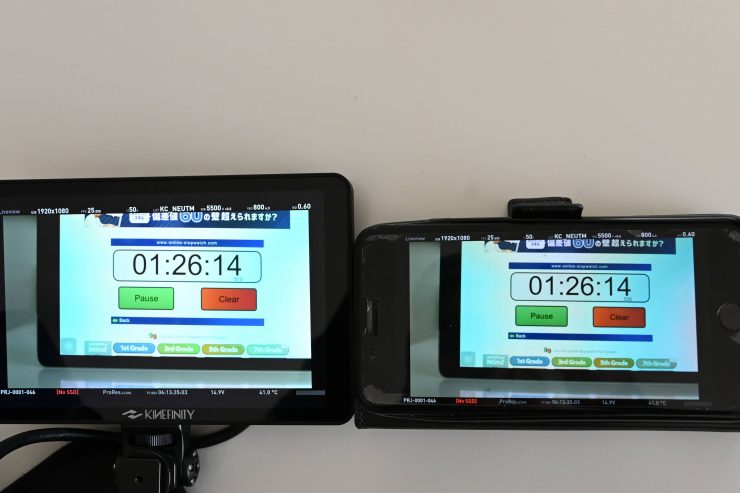
What do these figures actually mean? Well, anything below 100ms is considered to be low, because most humans don’t perceive a delay that small. Once you get over 100ms we perceive a noticeable delay.
Above you can see what the delay looks like in real-time with the Kinefinity MAVO LF using SDI when the CineEyes 2S was in the Normal Mode. This is the default mode when choosing the Data Rate Setting. You can clearly see the delay from what is happening in front of the camera to what is being displayed on the camera’s monitor and what is being seen on the App.
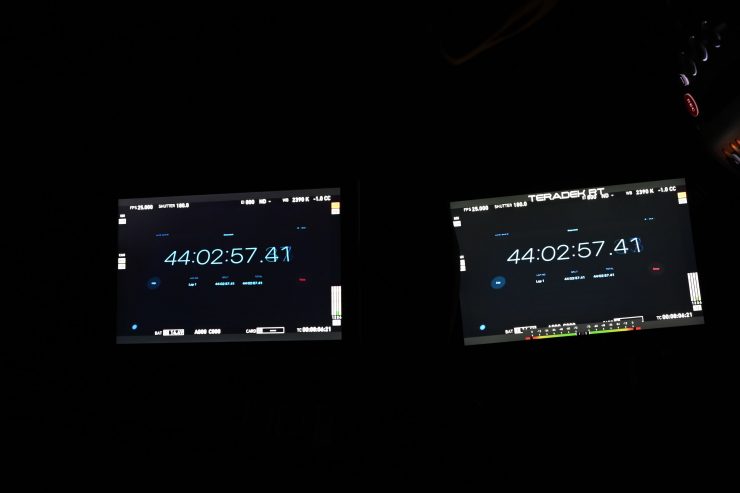
As a reference, above you can see that there is zero latency when using an expensive Teradek system (well, as close to zero as you can get. No wireless system is really zero in the scientific sense). This is a prime example of why you pay more money for a high-end wireless video system.
I was reasonably impressed with the low latency of the Accsoon CineEye 2S system. Given its relatively low price point it doe s a good job for a Wi-Fi based system that uses an App.
Delay on other app-based systems
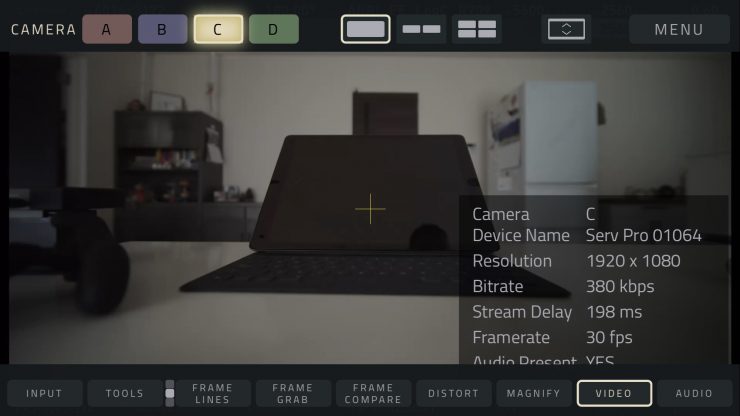
If we are just looking at the app-based latency, we need to look at how other wireless systems that can stream to an app perform. Even a device like the Teradek SERV Pro has a very noticeable delay. I did a quick test and found that I was seeing a latency delay of around 200ms. This same delay was there regardless of what camera I used or whether I was feeding an SDI or HDMI signal.
Real-world performance
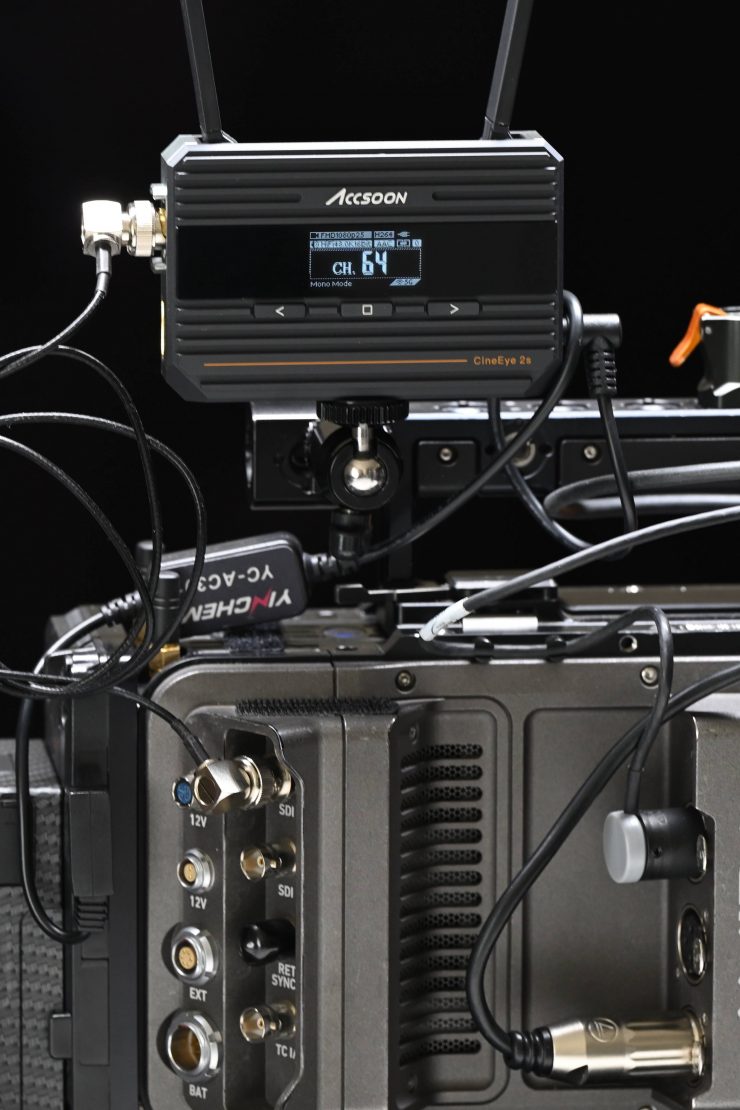
How does the CineEye 2S actually perform in the real world? Well, let’s find out.
One of the most important things for me apart from image delay and the operating range is reliability and usability. There is nothing worse than a wireless video system where you continually have to reset the system or restart apps.
I wanted to do a few tests to see how quickly the CineEye 2S recovers when an SDI cable is pulled out, the camera gets turned off, or the CineEye 2S runs out of battery power.
Firstly I wanted to see what would happen if I lost connection, so I turned the CineEye 2S off and then back on again. The problem I encountered is as soon as you turn the unit off the picture freezes up on the app and it won’t come back. This is because the CineEye 2S WiFi network gets turned off and it won’t just reconnect back up. You need to reconnect to the WiFi network and then restart the app.
So what about if I pulled out the HDMI or SDI from the camera and then plugged it back in? The system re-established the connection in under 2 seconds.
What happens if I turn the camera power off and then turn it back on again? Again, the signal came back in around 2 seconds.
So what would happen if I suddenly changed the frame rate to 50p from 25p on my camera while the system was on? It took around 8 seconds for the picture to return.
So what about the operating range? The real transmission distance is relevant to the current air electromagnetic environment, because the system works in the ISM band, and therefore has exposure to all kinds of 5GHz band air interference.
With this in mind, I decided to test the range and performance of the system. To test the range of the system I remained in line of sight of the camera and TX unit and started walking away with the app running on my iPhone. I found that I could get around 150m (492′) and still have a stable signal. If I went any further I did get image breakup. The system is also susceptible to interference and break up if anything gets between your camera and the person who is monitoring.
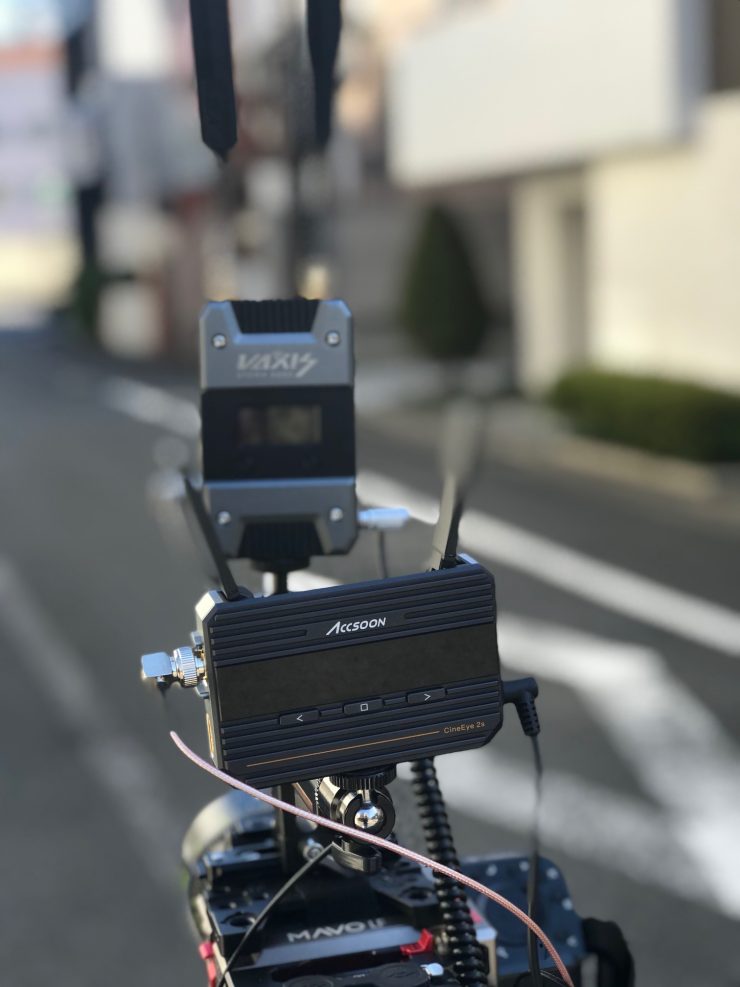
I also found that if I attempted to use the CineEyes 2S at the same time as another wireless video TX unit, that TX unit just overpowered the signal and the CineEye 2S became unusable. This is something to just keep in mind.
The range of the Accsoon CineEye 2S was as advertised, however, you do get a lot more image breakup than when using most other dedicated TX and RX wireless systems.
Price & Availability
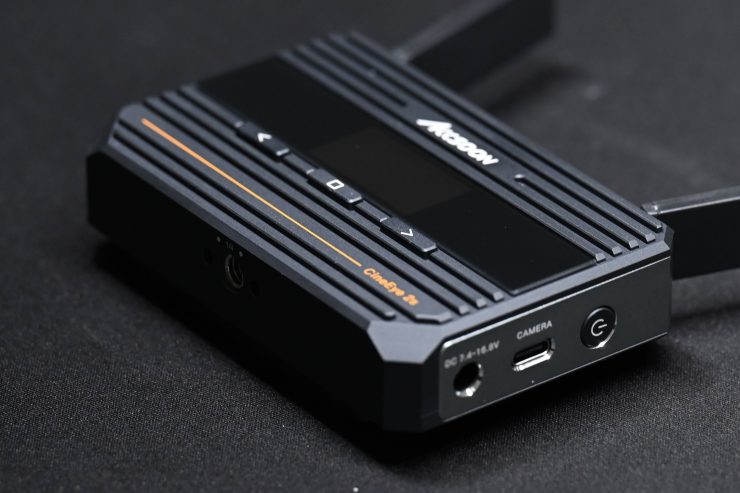
The Accsoon CineEye 2S retail for $329 USD, which makes it $80 USD more expensive than the CineEye 2 ($249 USD). It is now available to purchase.
How does this price compare to other wireless video systems that have both SDI and HDMI and can stream to an app?
- Vaxis ATOM 500 SDI Wireless Video Transmitter and Receiver Kit (SDI/HDMI $459 USD
- Teradek SERV Pro $1,799 USD
- Hollyland Mars 400S SDI/HDMI Wireless Video Transmission System $569 USD
- Hollyland Mars 400S PRO SDI/HDMI Wireless Video Transmission System $649 USD
Please note all of the above systems offer different features and functionality. The Hollyland and Vaxis options have the added benefit of coming with RX units.
The benefit the Accsoon CineEye 2S has is that it is a lot cheaper than these other options, but you do need to be aware that it doesn’t come with an RX unit, nor is there one available.
Conclusion
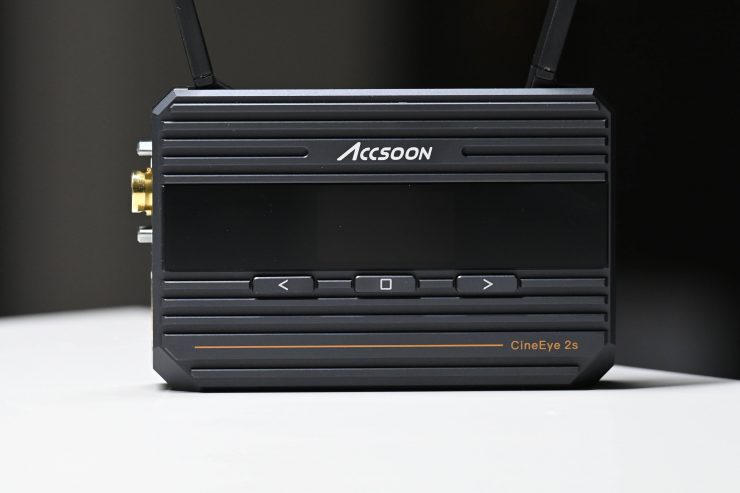
The Accsoon CineEye 2S is well built, easy to set up and use, and it has a reasonable operating range. The quality of the image being displayed on the app is pretty decent. The app itself is reasonably good but there is certainly room for improvement.
As far as image delay goes it is pretty good, especially if you are using it with a camera that has an SDI output or one that doesn’t have bad HDMI latency.
You need to clearly know that this system is not going to provide you with latency-free images. The results you are going to get will depend greatly on the camera you are using. In saying that, my testing showed that the latency is very minimal. This is not a system you would want to pull focus with remotely. You need to clearly be aware that this isn’t a product that has been designed to compete with non-compressed, low latency systems.
This is really a product that is designed to be used when you are close to the camera you are transmitting from. In situations like that it works very well. Once you start trying to use it over some distance it doesn’t work as well.
Having the ability to rig up a lightweight and compact TX unit to a camera so that producers, directors, clients, or even a sound recordist can see your images is really handy. Look, this is not a solution that will be suitable for everyone, but it is an affordable way for anyone to offer a wireless feed to clients or people they work with.
Accsoon has done a good job with this product and it is nice to know that that there is now a very inexpensive and compact wireless TX unit available that you can use with SDI cameras.
Like what we do and want to support Newsshooter? Consider becoming a Patreon supporter and help us to continue being the best source of news and reviews for professional tools for the independent filmmaker.

